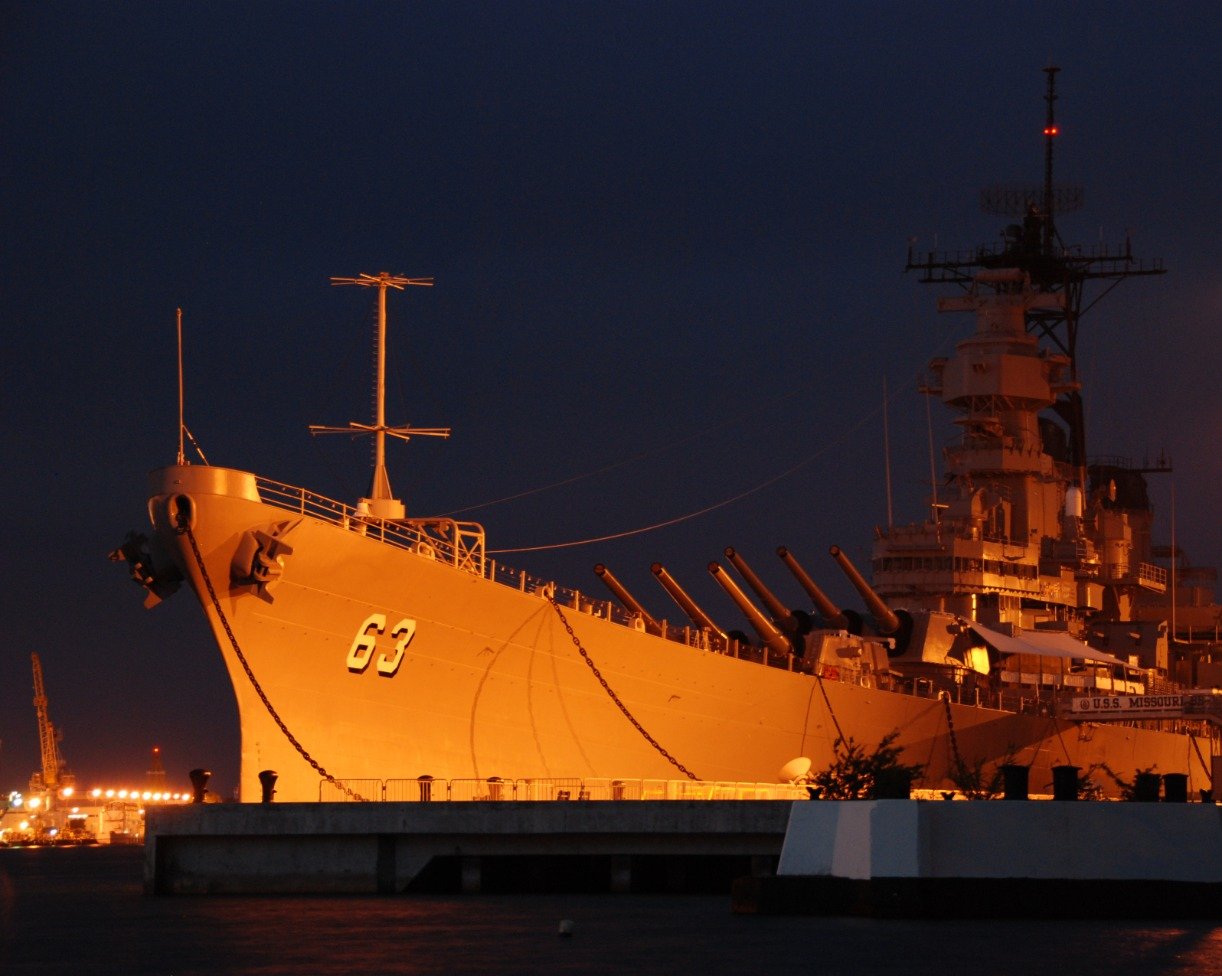How the Navy's Iowa-Class Battleships Made the Ultimate Comeback

How the Iowa-Class Made a Comeback - In the 1980s, amidst a backdrop of Cold War tensions and a substantial Soviet military buildup, the U.S. Navy reactivated its four Iowa-class battleships as part of President Reagan's initiative to expand the Navy to 600 ships. These battleships, initially decommissioned following World War II due to the rise of aircraft carrier dominance, underwent significant modernizations to render them viable for contemporary naval warfare. Upgrades included the addition of Tomahawk and Harpoon missile systems, advanced radar and fire control systems, and Phalanx Close In Weapons Systems for defense against modern threats. Despite their enhancements and a showcase of power during Operation Desert Storm, the dissolution of the Soviet Union and advancements in naval technology led to their final decommissioning by 1992. Arguments about their obsolescence, cost of reactivation, and the impracticality of maintaining their old weaponry in a modern context ultimately led to all four becoming museum ships by 2006. This marked the end of the era for the iconic battleships, symbolizing a shift in naval warfare strategy and the evolution of military technology.
Until the Second World War, massive battleships were seen as the basis around which oceangoing navies were built. Their size and armament made them formidable foes in a traditional line of battle and gave them the ability to provide massive amounts of supportive naval gunfire to troops ashore. Several of these paradigms were tested during World War II, such as at the Battle of Surigao Strait, the last battleship-on-battleship action in history, and multiple amphibious assaults in both theaters of the war. Ultimately, however, one of the main takeaways was that the aircraft carrier was the new power of the seas, and battleships began fading into obsolescence. Indeed, by 1947 all but one of the U.S. Navy’s battleships were placed on reserve status.
Less than two decades later, in 1964, all but four battleships had been stricken from the Naval Vessel Registry (NVR) meaning they were fully retired and broken up. The four Iowa class ships remained in reserve and were occasionally reactivated to provide naval gunfire support. So how did they come to be reinstated and what was their ultimate fate?
The Soviet build-up
Following the conclusion of the Vietnam war, the U.S. public lost trust in its armed services. By contrast the Soviet Union began a buildup of its army and navy. By the time Ronald Reagan took office in the 1980s, the USSR had significantly increased the size of its armed forces and held a distinct numerical edge. It had additionally undertaken a modernization program which included the construction of nuclear-powered Kirov-class battlecruisers, the largest surface combatant put to sea outside of carriers and amphibious assault ships since the Second World War.
In response, President Reagan proposed, among other things, the expansion of the Navy to 600 ships. This would be accomplished by retaining old ships in service for longer, increasing the rate at which new ships were constructed, and reactivating several older ships, including all four Iowa-class battleships then in mothballs.
Refitting the Iowas
To make these venerable ships ready for service, they had to undergo an extensive refit. Significant technological advancements had rendered them vulnerable while decreasing their overall offensive effectiveness. Improvements to their weaponry, electronics, and a new air wing allowed them to hold their own in the 1980s.
While the 16-inch guns of their main battery remained the centerpiece of their armament, the battleships also received Armored Box Launchers and Mk 141 quad launchers. The former fired Tomahawk Land Attack Missiles while the latter launched RGM-84 Harpoon anti-ship missiles. With ranges of 600 to 1,800 miles, this substantially increased the offensive capacity of these ships as the 16-inch guns could only accurately fire out to approximately 20 miles.

The new missile systems demanded upgraded radars and fire control systems, representing the bulk of the electronic retrofit. Other upgrades primarily consisted of overhauling the communications system to increase range and reliability.
Defensively, the 20 and 40 mm anti-aircraft turrets had been made obsolete by the speed and maneuverability of jet aircraft. These and their associated fire control radars were removed and replaced by four Phalanx Close-In Weapons Systems mounts, serving as a last line of defense against incoming projectiles. Other turret platforms were converted into storage and launch sites for MANPAD Stinger missiles to allow the crew to shoot down attacking enemy aircraft.
Some of the most notable upgrades were to the battleships’ air wing. Initialy designed with catapults and cranes to launch and recover float planes, by the ’50s and ’60s, these aging platforms had been replaced by helicopters. Advancements in technology allowed the battleships to field RQ-2 Pioneer drones to aid in weapons spotting.
Service while recommissioned:
Ultimately, these behemoths never tangled on the high seas after their reinstatement. Two of them, however, the Missouri and the Wisconsin, did see service in conflict again, serving as naval gunfire support vessels in Operation Desert Storm. Their work there provided fodder for battleship proponents when the debate over their fate raged through the 1990s.
Final fate:
With the dissolution of the Soviet Union in 1991, the U.S. no longer needed such a massive military build-up. All service branches began to draw down, and the Navy was no exception.
The recommissioned battleships were some of the first on the chopping block, decommissioning all four by 1992. The Navy wanted to strike the vessels from the NVR. However, certain factions within the service and outside lobbying convinced Congress in 1996 to maintain at least two of the vessels in reserve. These groups pointed to their role as naval gunfire support ships during amphibious assaults as a reason to keep them combat-ready.
Detractors of this argument and navy policy pointed towards several reasons to get rid of the battleships. Improvements to the 5 in. gun in service aboard Arleigh-Burke destroyers and Ticonderoga cruisers were expected to increase its range to 60 miles, far outstripping the 16 in. guns on the battleships. Arleigh-Burkes can carry upwards of 90 missiles with Vertical Launch System tubes, nearly three times that mounted on the Iowas.

These arguments also included the expense needed to reactivate the ships, 1998 estimates put the cost at $500 million per ship just to get it back to 1980s standards, let alone modernize it for the 21st century. Losses in institutional knowledge would make it difficult to train sailors on equipment such as the 16 in. gun while lack of replacement parts meant each ship could sustain only a single deployment firing regularly before running out of spare parts. The costly and time consuming process of recreating production lines for this equipment represented a knock-on detriment. Finally, each battleship was estimated to require nearly 3,500 sailors, enough to crew ten destroyers.
All these arguments eventually prevailed on Congress to allow these battleships to be stricken from the NVR, with the last two, Iowa and Wisconsin, stricken in 2006. All four Iowas are now museum ships.
- Questions and Answers
- Opinion
- Story/Motivational/Inspiring
- Technology
- Art
- Causes
- Crafts
- Dance
- Drinks
- Film/Movie
- Fitness
- Food
- Jocuri
- Gardening
- Health
- Home
- Literature
- Music
- Networking
- Alte
- Party
- Religion
- Shopping
- Sports
- Theater
- Wellness
- News
- Culture
- War machines and policy

